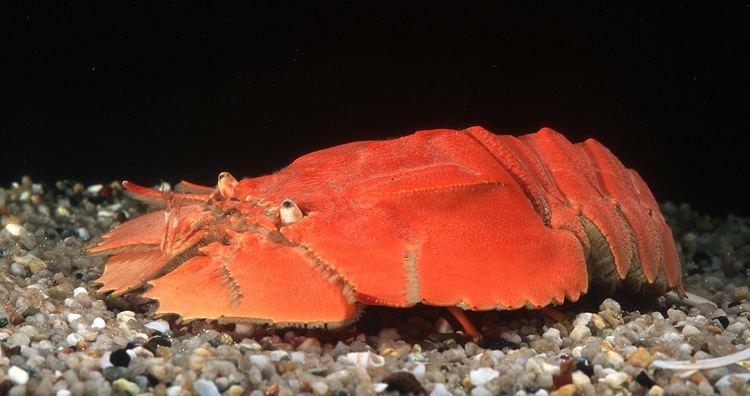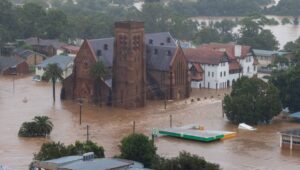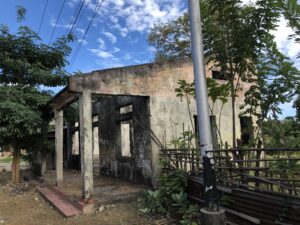Wednesday, 10pm. Bit sad.
If Mary Fowler progresses and Sam Kerr maintains her place at the apex of the game then we’ll have a formidable attack for the 2027 Cup, the venue of which will be announced on 17th May next year. Four bids are being considered:
- Germany, Netherlands, Belgium
- United States, Mexico
- Brazil
- South Africa
But it’s a bit early to speculate on that while understandably defeat hurts. Time to concentrate on Sweden in two days’ time for the game to determine the bronze medal.
Finally, an Olympic gold medal in Paris in next year would be some compensation.
As Tony Armstrong said to this youngish side “Maintain the Rage!” Well at least metaphorically.
 Matilda Day
Matilda Day
Well done Matildas! Seeded 13th, and yes, home ground advantage; but beaten by the Poms, seeded fourth. Probably the Poms were a better team – cagey and robust. Nevertheless, we had our chances.
It is thus a very appropriate time, Prime Minister, if you had the courage. Why not replace the King’s Birthday with Matilda Day to celebrate Australian women including their sporting achievements? A good time to institute such a change, given that it is not even Charles’ real birthday, and if you stand back, you would realise how ludicrous it is for us to celebrate the mythical birthday of an ageing Pom, who has no relevance to modern Australia, apart from being the representative of colonial overlords, whose ancestors help drive my family out of Ireland or would have left them to starve. I’m sure that I am not the only Australian to feel the same way.
If you would ask the Australian people whether they thought a public holiday to continue to celebrate somebody who would have done King George III of 1788 fame proud, or what the Matildas represent, I am sure they would choose Matilda Day.
And if that doesn’t convince us of our Prime Minister’s judgment, perhaps his interviewer-of-choice in the UK, Piers Morgan’s comments might jolt him into ditching his obsequious attitude to the British:
England’s fabulous Lionesses crush Australia’s wilting Matildas 3-1 in their own back yard to reach the Women’s World Cup Final … sweet revenge for the Jonny Bairstow Ashes runout debacle. Congrats ladies – you’ve made your country proud! Morgan wrote.
Matched only by England’s guttersnipe, Stokes’ tweets. Bitch about cricket all you like, no matter how unwarranted without checking your own MCC rules, but what have the Matildas done to deserve your disgusting commentary other than play hard and accept the result graciously.
Did you guys enjoy Sam Kerr being kicked in the face?
Those two should witness the demonstration of grace – the Matildas.
Humbug Valley
I had not travelled up the New England Highway for some years before last week. I remember travelling up the highway first in May 1956. My father believed, as my mother had died two months before, that it would be therapeutic to get away from Melbourne and go to Brisbane. It was the last capital city I needed to visit to complete the set, if Darwin had not to be included. In any event I had travelled with my parents on The Ghan to Alice Springs five years before. This had left Queensland the only State or Territory that I had yet to visit, but in the intervening years my mother had become very ill.
It was a time when John Landy had the whole country in a fervour as he tried to break the four-minute mile. I remember when we were driving up the Highway, we passed a car, which was stopped. We noted its driver as we were, listening to the crackle of the broadcast. It was obvious that both of us were listening to John Landy running. Why else would this stranger be jumping up like a dervish while acknowledging what he assumed to be a kindred spirit as we honked our car’s horn? I can’t remember what time Landy did in this race.
On this occasion last week we were headed to stay with an old friend and his partner, who live in Toowoomba, and we stopped overnight in Armidale, where I first visited for a university student meeting in 1960. It was a tense time then, because the University of Melbourne student body had seceded from The National Union of Australian University of Students (the Australian Nation Union of Students title was thought to be very inappropriate – but not by all!) the year before I became President of the University of Melbourne SRC.
The reason for the secession has been lost in the mists of time, but coming in to land, those mists were still there, hanging around the airport. The campus of the University reflected the youth of the University as a separate entity from its parent University of Sydney in 1954. It was a dismal place. Little money had been spent on it. There was mud everywhere and wood planks had been put down to assist the attendees in negotiating the mud. I remember that nevertheless there were several falls from insecure planks. As for the meeting, the outcome was relatively positive although Sydney University, with Michael Kirby to the fore, was implacably opposed to our readmission.
 Anyway, these anecdotes are by-the-by. The New England Highway resembles the Hume Highway of the 1960s in being two lanes passing through every little village, with restricted speeding. The only exception was Scone where, given the overall lousy standard of the bitumen, we found here a smooth stretch. I presumed the Scone bypass was relatively new, and on checking, it was completed three years ago. To finish this picture, there are occasional overtaking lanes but very few rest areas, and travelling north these always seem to be on the other side of the road.
Anyway, these anecdotes are by-the-by. The New England Highway resembles the Hume Highway of the 1960s in being two lanes passing through every little village, with restricted speeding. The only exception was Scone where, given the overall lousy standard of the bitumen, we found here a smooth stretch. I presumed the Scone bypass was relatively new, and on checking, it was completed three years ago. To finish this picture, there are occasional overtaking lanes but very few rest areas, and travelling north these always seem to be on the other side of the road.
What has changed? It is the volume of traffic, and now the trucks are Leviathans. The number of coal trucks confirms that we are in the land of the climate change denialists. Then the coal trains passing through reinforce this view. The Hunter Valley is littered with coal mining activity, sneering at climate change. As the prospect of a world consumed by fires ramps up, it will even reach the coal executives high in their office tower buildings from where admittedly the view of the Coal Fires could be beautifully apocalyptic.

Once Hunter, now Humbug, Valley (can’t close the mines – what about the jobs!) I would suggest there will be many more jobs for firefighters trying to put out the flames. Passing yet another rumbling overladen coal truck just keeps reminding us that public policy in this country is a travesty. Yet we are letting the politicians, who should be rectifying it, get away with doing nothing, thus effectively complicit in the murder of our planet.
Belltrees
Traveling through the Hunter Valley reminded us of the time we spent a weekend for four, courtesy of British Airways at Belltrees. Belltrees is the home of the White family, from which the noted author Patrick White was spawned. The White family have owned an extensive tract of land in the Upper Hunter region of New South Wales since 1831, and in the process of acquisition acquired all the water rights. Wealth and White have been synonymous there, in a property which once occupied 56,000 hectares at its biggest, but now is a relatively modest 9,000 hectares.

We stayed in one of the cottages in the grounds of the 52-room Federation mansion, where we were greeted with afternoon tea, followed in the evening by an excellent traditional meal with Hunter wines, Tyrrells as I remember them. The next day exploring the grounds, we had a picnic lunch, and drove up to Ellerston, the Packer property in the lee of the forested Barrington Tops. Very select, well-guarded, high Cyclone wire fence encircling the property, where Packer even then had multiple polo fields hidden away in his 28,000-hectare property. A large helicopter could be seen, like the Royal Standard over Buckingham Palace, suggesting in this case, Packer was in residence.
That visit to Belltrees was probably in the early nineties, and I was talking to a friend who knows the value of property in that area. He had looked at parcels of land being carved from the estate and put up for sale. This slice of the property was sold, but still a substantial amount remains, despite the remaining White owners investing into polo rather than farming.
I thought then it was another world, but Sydney is ringed by settlement where pioneering families still abound, where their presence is muted, as “old money” still exists and has not been gradually whittled away over the generations. I believe polo is one such “whittling indulgence”.
Just Love that Ibacus peronii

Nambucca Heads is one of those coastal, or more correctly riverine communities, which have grown over the years from being a fishing village to being a place where people have built holiday homes, and more recently by those retiring and moving to these townships – the sea change. With this evolution the housing just resembles any other metropolitan suburb or township, but 500 km from Sydney. The housing stock is no different. Houses with the narrow eaves, energy inefficient, timber framed, brick veneer or cement construction with a vestigial garden, plonked down to remind one that all individuality in such towns is increasingly being lost.
But not quite. In a quiet spot on the Nambucca River away from the major hub is Davis Seafood. This unprepossessing shopfront has a sign which highlights that you can buy fish and “air fried chips”. Small notices above the door state “flake”, “blackfish” and “mullet”. They also announced that they sold crustacea – mud crab and Balmain bug.
Well, it was not very promising. There was neither flake nor blackfish available. The mullet had been sold out. It was one of those places where the day’s catch was sold – until there was no more. As for mud crabs, they were not available in August – rule of thumb, mud crabs are only available in the months that have the letter “R” in their title.
However, there were Balmain bugs, freshly caught, freshly cooked. They were small. Nevertheless, they tasted as I have never tasted one before. Reminiscent of lobster, but more delicate and where one could taste the brine. Absolutely sublime.
That was not all. there were whiting fillets available for the fish and chips – it may not have been wrapped in newspaper, but it was that authentic taste that I remembered from my childhood. Nostalgia may have clouded this enthusiastic reminder of the fish and chips of yore. In my fish files, the Balmain bugs were the best I ever tasted. Ironically, we live in the Sydney suburb where the Bugs, Ibaci peronii, were common; but sadly, no more.
Vegemite on the Moonie
This past weekend we stayed with John and Hillary plus Poppy, her Dalmatian. As a side comment, I do not care much for dogs; but I must say these hounds with their black spotted coat have a noble appearance. I could see these carriage dogs bounding alongside the coach protecting the travellers from the attacks of wild animals or highwaymen with the temerity to not yield to these regal canines.
John Kibble has been a friend of mine for nearly 40 years. He was a Queensland medical graduate with a deep-seated affinity for the Darling Downs and has owned cattle properties across Queensland as well being in the forefront of promoting day surgery.
Below is a poem, which I wrote some years ago. The fact we still had a blue Saab then gives some indication how long ago this subject of the poem occurred. John had invited us to the Flinton races. Flinton itself is a population speck about 100 kilometres east of St George, a place for growing melons (the major grower was a man called Moon and his melon harvest known as “moon rocks” – although we were informed that he now grows onions – “onimoons” doesn’t have the same ring.)
However, the race meeting coincided with heavy rain, so heavy that the races were cancelled, but nevertheless John had invited us to stay at his property through which the Moonie River ran. We were to go on to St George, and the Moonie was due to bring a “banker”. If that occurred, we would not be able to ford the River and this meant a sixty kilometre detour.
Therefore, the ballad below relates what happened when we crossed the Moonie River that age ago when “ute” was still a word. Read on:

 Squares and Spanish Moss
Squares and Spanish Moss
Savannah is one of those Southern United States cities where the Spanish moss hangs from the trees, the magnolias bloom, azaleas abound in spring and where the arterial Savannah River still has paddle steamers contributing to that nostalgic belief of courtly southern etiquette, with the whole city built around squares. Although the city was not razed by the Northern Army during the Civil War, the ghosts of men in grey uniforms and women in bonnet, shawl and crinoline still wander the streets with their jolly loyal black attendants, caricatures, perhaps called Aunt Jemima and Uncle Remus.
We had stopped off in Savannah, taking a break from our railway trip from Miami to New York. Once the train would back up into the city centre, but now as we waited to leave Savannah late at night, I watched those who were waiting like us for the Amtrak, white and African American groups, huddling against the cold. I had this product of fertile imagination of what an ideal place for a terrorist attack – an isolated shed aka railway station late in the evening. Fertile, but it is not my usual reaction when I have been in such locations. Eventually the train came. It was late.
But back to the beginning. Even though it was early winter, we wanted to walk the Squares of this city in Georgia, starting at the River and then proceeding away in a roughly centrifugal manner. Each of the squares had its own identity.
Monterey Square is probably the most well-known of all the Squares, because of its association with John Berendt’s non-fictional novel “Midnight in the Garden of Good and Evil”. Although it did not win the Pulitzer Prize, it has become of the most popular novel of its type, being on the best-seller list for over four years after its publication in 1994 and the subsequent 1997 Clint Eastwood film, in which Jack Thompson is featured as the savvy trial lawyer, Sonny Seiler, who defended Jim Williams in his trial for the murder of Danny Hansford, his sexual partner. Sordid is one word which comes as one wanders through this licentious Berendt swamp but is it compelling reading!

In that Square there is also a house built by an ancestor of Johnny Mercer, the song writer, who wrote many famous songs, including one of my favourites, Moon River. We stayed in the Hyatt Avia Hotel on Ellis Square facing the Market, where there was an almost life size statue of Johnny Mercer leaning on a fire hydrant reading a newspaper. It had been vandalised and remained partially covered.
Savannah, at the time we walked around the city, had 23 Squares although others had been mapped out and been lost with time. The Squares nevertheless defined the people who lived around them. This bred an individuality in each of these Squares.
For instance, there is Chippewa Square named for the 1814 victory of the United States near Niagara. This was one of the battles in the 1812 War, which showed that the United States army could match it with a seasoned British military force fresh from its victories in the Napoleonic Wars. The US army was under the command of General Jacob Brown. But the statue in the Square is that of a stout General Oglethorpe with sword unsheathed, as he faces south, repelling the Spanish presumably.
General James Oglethorpe founded Savannah in 1733 as a bulwark against Spanish incursions into the British Carolinas and as a potential port for raw material export. In this case the crop was cotton, bolstered by black slavery to ensure the growth of Savannah as a significant port.
Nevertheless, Chippewa Square has modern notoriety, as it was where Tom Hanks as Forest Gump was filmed on a park bench waiting for a bus. I could not find the spot.
Although there is an Oglethorpe Square, where the Moravians settled with their musical skill and ability to craft musical instruments, the first two Squares created were Johnson and Telfer Squares, all lined up near the river. These squares in winter were not the most attractive but were areas where the first churches were built and generally had religious associations. John Wesley later, as a young clergyman, came to Savannah and preached there.

As it was winter, it was not the time to visit Savannah if you wanted to smell the flowers. These Squares were thus stripped of their colour and were reliant on their structure, the architecture, the configuration – whether the central point was fountain or statue. Each Square has its own distinct history.
What did we take away from Savannah? A black felt rat with pink inner ears. This rat had been left over from Halloween. Having read Berendt’s novel, I could not think of anything more appropriate than the acquisition of such a dark forbidding creature. Savannah, after all, epitomises that Baudelaire axiom about at the heart of intense beauty that evil can permeate the environs.
Mouse Whisper
Seen on the back of a caravan being towed by a 4WD vehicle in northern NSW, “Adventure before Dementia”.
A brutal warning not to delay travel and acquisition of new experiences before it is too late. People say glibly 70 is the new 50. Somewhere in the seventies, this gap closes (if it ever existed) and by the age of 80, 80 is 80, I am assured.
We mice do not have to worry. Getting to seven years is not the new five.





 Over ten years being associated with orchards in the Goulburn Valley made one well aware that after cherries and apricots, the first available Spring fruit was followed quickly by peaches and nectarines and then after Christmas, with berries, came pears and a long tail of various types of apples – and over time there was a shift in the popularity of various types. Peaches were no exception. The prime production of peaches was of the deep yellow clingstone variety which were good for canning, but as fresh eating fruit not as good as the freestone variety. The clingstone although juicy, had skin often difficult to remove. Clingstone peaches are the staple for canned peaches but freestone peaches are becoming more popular. The problem with peaches, which look so attractive, is that such attraction is very ephemeral. Fresh peaches have short shelf life without refrigeration, and it was rare to find them being sold on the roadside.
Over ten years being associated with orchards in the Goulburn Valley made one well aware that after cherries and apricots, the first available Spring fruit was followed quickly by peaches and nectarines and then after Christmas, with berries, came pears and a long tail of various types of apples – and over time there was a shift in the popularity of various types. Peaches were no exception. The prime production of peaches was of the deep yellow clingstone variety which were good for canning, but as fresh eating fruit not as good as the freestone variety. The clingstone although juicy, had skin often difficult to remove. Clingstone peaches are the staple for canned peaches but freestone peaches are becoming more popular. The problem with peaches, which look so attractive, is that such attraction is very ephemeral. Fresh peaches have short shelf life without refrigeration, and it was rare to find them being sold on the roadside.




 The series was originally set on a mythical RAF base modelled on the real-life Moreton-in-the Marsh RAF base. It featured a number of English comedians, such as Richard Murdoch and Kenneth Horne. Their audience thought them funny as their binding – that is grumbling – was undertaken with a comic air. As was said about Horne, “a master of the scandalous double-meaning delivered with shining innocence” – the basis of much English humour.
The series was originally set on a mythical RAF base modelled on the real-life Moreton-in-the Marsh RAF base. It featured a number of English comedians, such as Richard Murdoch and Kenneth Horne. Their audience thought them funny as their binding – that is grumbling – was undertaken with a comic air. As was said about Horne, “a master of the scandalous double-meaning delivered with shining innocence” – the basis of much English humour. It was also 1973, when much was happening in Canberra. Let’s say it was not a boring year in politics. Given that I lived in this different era in Canberra, on several occasions Gough Whitlam’s speech writer, Graham Freudenberg, invited me around for a drink in the Prime Minister’s office after stumps were drawn, and on at least one occasion we were joined by the journalist, Laurie Oakes.
It was also 1973, when much was happening in Canberra. Let’s say it was not a boring year in politics. Given that I lived in this different era in Canberra, on several occasions Gough Whitlam’s speech writer, Graham Freudenberg, invited me around for a drink in the Prime Minister’s office after stumps were drawn, and on at least one occasion we were joined by the journalist, Laurie Oakes. I had one experience of being accused of leaking to Laurie Oakes the contents of a sensitive meeting between Bill Snedden, Jim Carlton, then the general secretary of the NSW branch of the Liberal Party, and then Premier of the NSW, Bob Askin. I was taken to lunch – I remember by Tim Pascoe, then a Liberal Party operative – and he passed on Jim Carlton’s concern that I had leaked the details to Laurie Oakes. Why? Because I was seen as close to Oakes at that time. I did not know what he was talking about, as Snedden had not mentioned the matter to me. When I confronted Oakes, he admitted it was Askin. Carlton would not have believed that such a luminary as Askin would leak – after all, he was the Premier. It was just one accusation used in undermining my position. I informed Snedden of my conversation but otherwise kept quiet. Now, so many years on, who cares about revealing the leaker – but remember the lesson, never pick the obvious.
I had one experience of being accused of leaking to Laurie Oakes the contents of a sensitive meeting between Bill Snedden, Jim Carlton, then the general secretary of the NSW branch of the Liberal Party, and then Premier of the NSW, Bob Askin. I was taken to lunch – I remember by Tim Pascoe, then a Liberal Party operative – and he passed on Jim Carlton’s concern that I had leaked the details to Laurie Oakes. Why? Because I was seen as close to Oakes at that time. I did not know what he was talking about, as Snedden had not mentioned the matter to me. When I confronted Oakes, he admitted it was Askin. Carlton would not have believed that such a luminary as Askin would leak – after all, he was the Premier. It was just one accusation used in undermining my position. I informed Snedden of my conversation but otherwise kept quiet. Now, so many years on, who cares about revealing the leaker – but remember the lesson, never pick the obvious.











 However, as Dr Abraham had said, having repeated head on collisions at about 50 kilometre per hour cannot be good for the brain irrespective of whether you have a helmet or not (galea as the Romans would call it). Being medical practitioners, he and I are acutely aware of changes in our mental ability; that is until we have lost the ability to be aware.
However, as Dr Abraham had said, having repeated head on collisions at about 50 kilometre per hour cannot be good for the brain irrespective of whether you have a helmet or not (galea as the Romans would call it). Being medical practitioners, he and I are acutely aware of changes in our mental ability; that is until we have lost the ability to be aware.




